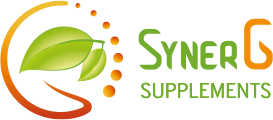19 items in my cart
-
L-Glutathione 60 capsules Ortho Molecular Products Reg.: $61.00
$61.00
Qty: 1
-
Dandelion - 50ml (2 oz) Reg. $23.00
$23.00
Qty: 1
-
Serenagen™ 60 tablets Metagenics Reg. $28,00
$28.00
Qty: 1
-
Potas 100 capsules Nature's Sunshine Reg.: $35.00
$35.00
Qty: 2
-
Relief Terrain CalmeXX 50 ml Viatrexx - (formerly Relief 3-G12) - Reg.: $30.00
$30.00
Qty: 1
-
Probiotic Powder 225 g Syner G Supplements Reg.: $62.00
$62.00
Qty: 1
-
Antioxidant Synergy AOR 120 v-capsules Reg.: $71.00
$63.00
Qty: 1
-
UltraClear Renew™ Chai Flavour 21 servings Metagenics Reg.: $133,00
$133.00
Qty: 1
-
Reflux 25 ml Kidz Reg.: $12.00
$12.00
Qty: 1
-
R-96 15ml (0,5oz) Dr. Reckeweg Reg. $23.00
$23.00
Qty: 1
-
Holy Basil 60 v-caps AOR Reg.: $36.00
$31.00
Qty: 1
-
Whey Protein Powder 500 g Syner G Supplements Reg.: $65.00
$65.00
Qty: 1
-
Exhilarin™ 60 tablets Metagenics Reg. $35,00
$35.00
Qty: 1
-
Chanca Piedra 90 v-caps AOR Reg.: $36.00
$32.00
Qty: 1
-
Magnesium Complex 100 capsules Nature's Sunshine Reg.: 26.00
$26.00
Qty: 1
-
PhytoMulti™ 120 Tablets without iron Metagenics Reg.: $91,00
$91.00
Qty: 1
-
Vegan Protein (Powder 500 g) Syner G Supplements Reg.: $67.00
$67.00
Qty: 1
-
Oats 50 ml (2 oz) Reg. $23.00
$23.00
Qty: 1


























